Deepak Chopra
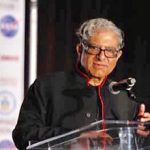
From Wikipedia Deepak Chopra (/ˈdiːpɑːk ˈtʃoʊprə/; Hindi: [diːpək tʃoːpɽa]; born October 22, 1946) is an Indian-American author and alternative medicine advocate.[4][5] A prominent figure in the New Age movement,[6] his books and videos have made him one of the best-known and wealthiest figures in alternative medicine.[7] His discussions of quantum healing have been characterised as technobabble – “incoherent babbling strewn with scientific terms”[8] which drives those who actually understand physics “crazy”[9] and as “redefining Wrong”.[10] Chopra studied medicine in India before emigrating in 1970 to the United States, where he completed a residency in internal medicine and a fellowship in endocrinology. As a licensed physician, in 1980 he became chief of staff at the New England Memorial Hospital (NEMH).[11] In 1985, he met Maharishi Mahesh Yogi and became involved in the Transcendental Meditation (TM) movement. Shortly thereafter, Chopra resigned his position at NEMH to establish the Maharishi Ayurveda Health Center.[12] In 1993, Chopra gained a following after he was interviewed about his books on The Oprah Winfrey Show.[13] He then left the TM movement to become the executive director of Sharp HealthCare‘s Center for Mind-Body Medicine. In 1996, he co-founded the Chopra Center for Wellbeing.[11][12][14] Chopra claims that a person may attain “perfect health”, a condition “that is free from disease, that never feels pain”, and “that cannot age or die”.[15][16] Seeing the human body as undergirded by a “quantum mechanical body” composed not of matter but energy and information, he believes that “human aging is fluid and changeable; it can speed up, slow down, stop for a time, and even reverse itself,” as determined by one’s state of mind.[15][17] He claims that his practices can also treat chronic disease.[18][19] The ideas Chopra promotes have regularly been criticized by medical and scientific professionals as pseudoscience.[20][21][22][23] The criticism has been described as ranging “from the dismissive to…damning”.[20] Philosopher Robert Carroll writes that Chopra, to justify his teachings, attempts to integrate Ayurveda with quantum mechanics.[24] Chopra says that what he calls “quantum healing” cures any manner of ailments, including cancer, through effects that he claims are literally based on the same principles as quantum mechanics.[19] This has led physicists to object to his use of the term “quantum” in reference to medical conditions and the human body.[19] Evolutionary biologist Richard Dawkins has said that Chopra uses “quantum jargon as plausible-sounding hocus pocus“.[25] Chopra’s treatments generally elicit nothing but a placebo response,[7] and they have drawn criticism that the unwarranted claims made for them may raise “false hope” and lure sick people away from legitimate medical treatments.[20] Biography[edit] Early life and education[edit] Chopra was born in New Delhi,[26] British India to Krishan Lal Chopra (1919–2001) and Pushpa Chopra.[27] His paternal grandfather was a sergeant in the British Indian Army. His father was a prominent cardiologist, head of the department of medicine and cardiology at New Delhi’s Moolchand Khairati Ram Hospital for over 25 years, and was also a lieutenant in the British army, serving as an army doctor at the front at Burma and acting as a medical adviser to Lord Mountbatten, viceroy of India.[28] As of 2014, Chopra’s younger brother, Sanjiv Chopra, is a professor of medicine at Harvard Medical School and on staff at Beth Israel Deaconess Medical Center.[29] Chopra completed his primary education at St. Columba’s School in New Delhi and graduated from the All India Institute of Medical Sciences in 1969.[citation needed] He spent his first months as a doctor working in rural India, including, he writes, six months in a village where the lights went out whenever it rained.[30] It was during his early career that he was drawn to study endocrinology, particularly neuroendocrinology, to find a biological basis for the influence of thoughts and emotions.[31] He married in India in 1970 before emigrating, with his wife, to the United States that same year.[13] The Indian government had banned its doctors from sitting for the exam needed to practice in the United States. Consequently, Chopra had to travel to Sri Lanka to take it. After passing, he arrived in the United States to take up a clinical internship at Muhlenberg Hospital in Plainfield, New Jersey, where doctors from overseas were being recruited to replace those serving in Vietnam.[32] Between 1971 and 1977, he completed residencies in internal medicine at the Lahey Clinic in Burlington, Massachusetts, the VA Medical Center, St Elizabeth’s Medical Center, and Beth Israel Deaconess Medical Center in Boston.[33] He earned his license to practice medicine in the state of Massachusetts in 1973, becoming board certified in internal medicine, specializing in endocrinology.[34] East Coast years[edit] Chopra taught at the medical schools of Tufts University, Boston University, and Harvard University,[35][36][37] and became Chief of Staff at the New England Memorial Hospital (NEMH) (later known as the Boston Regional Medical Center) in Stoneham, Massachusetts before establishing a private practice in Boston in endocrinology.[38] Maharishi Mahesh Yogi was an influence on Chopra in the 1980s. While visiting New Delhi in 1981, he met the Ayurvedic physician Brihaspati Dev Triguna, head of the Indian Council for Ayurvedic Medicine, whose advice prompted him to begin investigating Ayurvedic practices.[39] Chopra was “drinking black coffee by the hour and smoking at least a pack of cigarettes a day.”[40] He took up Transcendental Meditation to help him stop, and as of 2006, he continued to meditate for two hours every morning and half an hour in the evening.[41] Chopra’s involvement with TM led to a meeting in 1985 with the leader of the TM movement, Maharishi Mahesh Yogi, who asked him to establish an Ayurvedic health center.[12][42] He left his position at the NEMH. Chopra said that one of the reasons he left was his disenchantment at having to prescribe too many drugs: “[W]hen all you do is prescribe medication, you start to feel like a legalized drug pusher. That doesn’t mean that all prescriptions are useless, but it is true that 80 percent of all drugs prescribed today are of optional or marginal benefit.”[43] He became the founding president of the American Association of Ayurvedic Medicine, one of the founders of Maharishi Ayur-Veda Products International, and medical director of the Maharishi Ayur-Veda Health Center in Lancaster, Massachusetts. The center charged between $2,850 and $3,950 per week for Ayurvedic cleansing rituals such as massages, enemas, and oil baths, and TM lessons cost an additional $1,000. Celebrity patients included Elizabeth Taylor.[44] Chopra also became one of the TM movement’s spokespeople. In 1989, the Maharishi awarded him the title “Dhanvantari of Heaven and Earth” (Dhanvantari was the Hindu physician to the gods).[45] That year Chopra’s Quantum Healing: Exploring the Frontiers of Mind/Body Medicine was published, followed by Perfect Health: The Complete Mind/Body Guide (1990).[11] West Coast years[edit] In June 1993, he moved to
Cyrus A. Raji
Cyrus A. Raji, MD, PhD is an associate professor of radiology and a principal investigator in the Neuroimaging Labs Research Center at Mallinckrodt Institute of Radiology (MIR), the academic radiology department of Washington University School of Medicine in St. Louis. Raji, also a professor neurology, serves as director of neuromagnetic resonance imaging at Barnes-Jewish Hospital and as associate director of the diagnostic radiology residency research track. He is board certified in diagnostic radiology and neuroradiology with research interests focusing on modifiable risk factors for dementia and the role of advanced neuroimaging in quantitatively tracking related brain changes. Raji graduated with a medical degree and doctorate from the University of Pittsburgh School of Medicine, followed by a transitional internship at UPMC Mercy Hospital. Subsequently, he pursued a diagnostic radiology residency at UCLA, where he was awarded the RSNA Roentgen Resident Research award. Raji later completed a two-year neuroradiology fellowship at UCSF including a NIH T32 Program funded year on connectome imaging of traumatic brain imaging research. For this work, Raji was recognized by the Society of Pediatric Radiology for the Best Basic Science Paper in the journal Pediatric Radiology and received the faculty level ASNR Boerger Research Grant for Alzheimer’s Disease. Upon joining the faculty at MIR, he obtained the RSNA Research Scholar Grant and was a KL2 Career Development Award Scholar. Raji is currently advancing his brain health research with a $2.3 million dollar NIH R01 grant to study neuroinflammation in midlife obesity. Clinical Interests General diagnostic neuroradiology Research Interests Alzheimer’s disease, dementia, cognitive disorders, traumatic brain injuries, lifestyle effects on the brain, preventive neuroradiology Link to Publications View all publications Education History Fellowship Diagnostic Neuroradiology, University of California, San Francisco Residency Diagnostic Radiology, University of California, Los Angeles Medical Degree University of Pittsburgh School of Medicine Doctorate University of Pittsburgh Undergraduate University of Pittsburgh Associations American College of Radiology Diplomate, American Board of Radiology Radiological Society of North America American Society of Neuroradiology American Society of Functional Neuroradiology Western Neuroradiological Society Los Angeles Radiological Society Organization of Human Brain Mapping International Society for Magnetic Resonance in Medicine Alzheimer’s Association International Society to Advance Alzheimer’s Research and Treatment Senior Editor, Journal of Alzheimer’s Disease Awards 2021 Thomas L. Slovis Award for the Best Basic Science Paper, Society for Pediatric Radiology 2018 Poster Prize, Health Science Category, Research Conference on Aging, University of California, Los Angeles 2017 Travel Award, Radiological Society of North America 2016 Roentgen Resident/Fellow Research Award, Radiological Society of North America 2011 Neuroscience Research Prize, University of Pittsburgh School of Medicine 2009 Neuroscience Research Award, American Academy of Neurology 2004 Phi Beta Kappa 2004 Mental Health Research Fellowship Award, NIMH 2003 Summer Fellowship Award, National Science Foundation Relevant Links
Sahel Rose
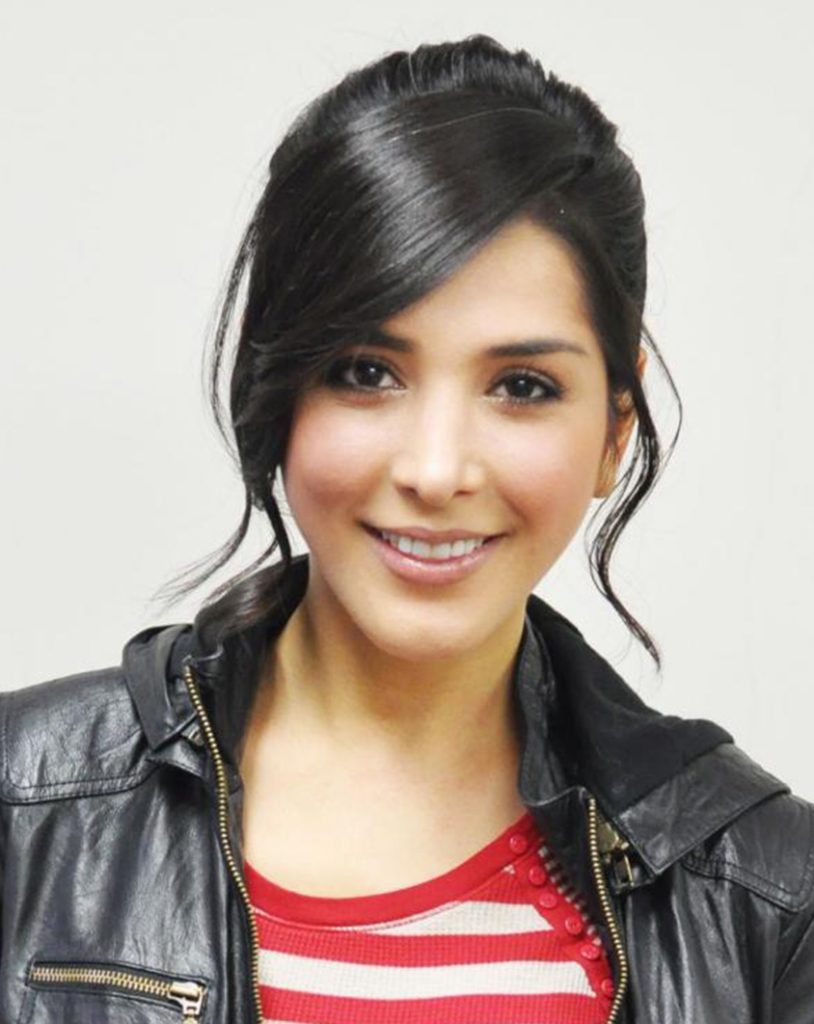
From bombed-out Iranian town to Japan’s entertainment world May 6, 2010 07:00 am JST 33 Comments By Chris Betros TOKYO When Sahel Rosa was about four years old, she said goodnight to her mom and dad and went to bed. That was the last she ever saw of her parents and 10 older siblings. Their home and much of the town on the Iranian side of the border with Iraq was destroyed in an air raid, despite the fact that there was supposed to be a ceasefire in the Iran-Iraq war. Yet, miraculously, Sahel survived for four days buried beneath the rubble until her hand was discovered sticking up beside a blue flower by a 23-year-old nurse. Since then, Rosa, now 24 (though she is not sure exactly when her birthday is) says that hardly a day goes by when she doesn’t ask herself why she was spared and what she was meant to do with her life, which has taken her on a difficult journey from a bombed-out Iranian town to TV personality in Japan. “I don’t remember much about that time,” she says quietly in fluent Japanese at NHK one afternoon. “It’s more in flashbacks or in my dreams. I’ve been told that the townspeople lived in constant fear of bombardment. Even today, when I hear fireworks, it stirs up memories.” Rosa wrote about her experiences in a book titled “From War Zone to Actress,” which was published in early 2009. “After I lost my family, I was in an orphanage for a few years but no one wanted to adopt me,” she says with a gentle smile. “When I was 7, I appeared in a government-sponsored TV commercial asking people to become foster parents of war orphans, and Flora – the nurse who saved me – saw it and decided to adopt me. When I was 8, I came to Japan with Flora and her Japanese fiance, but three weeks after arriving in Japan, he threw us out. I don’t think he wanted me, but I was too young to understand what was going on. I remember that my mother always made sure I had food, even if she had to go without it herself. For awhile, we’d take shelter in parks, and wash by using taps in public toilets. I would survive on school lunches during the week. On weekends and holidays, we used to go to supermarkets to eat the food samples they give out to shoppers. Eventually, some kind people helped us find a small apartment.” Contemplated suicide after bullying at school While her mother worked at menial jobs, Rosa continued to go to school, where she says she was subjected to bullying. “There were times when I contemplated suicide, but it was my mother’s devotion to me that kept me going. She always had a smile on her face for me,” she says. “I was in a world I never knew. Until I came to Japan, the only thing about it I had seen was the TV series ‘Oshin’ in Iran. The hardships that Oshin faced and overcame really inspired me to persevere. It took me 4-5 years until I could manage in Japanese.” Just before completing high school, Rosa got a job as a reporter on J-Wave radio, thus launching her entertainment career. However, she decided to continue her education and went to Tokai University where she studied IT, and a drama school to study stage acting. “I thought a university degree would help me take care of my mother in the future and it also made me feel like a contributing member of society at last,” she explains. For the past few years, Rosa has made guest appearances on TV and radio programs, done theater work, modeled and appeared in TV commercials. Her latest project is a weekly NHK program, “Chikyu (Earth) Document Mission,” which she co-hosts with announcer Masaaki Horio and lawyer Kanae Doi. The program, which will run for one year, looks at environmental problems from various angles such as people, nature and food, and how they are all connected. “It’s a good fit for me because I couldn’t afford to waste anything when I was growing up,” Rosa says. “It’s a pity that there is still a lot of waste in Japan. Most people take food and nature for granted. Since the program started in April, we have had good feedback from viewers. Some said they were surprised at the efforts of others; many said the program was a wake-up call for them on the environment and how even a small effort can make a difference in their own lives.” Of all her work, Rosa says she finds acting in dramas the easiest, while being on TV variety programs the most challenging. “Early in my life, I learned how to hide my emotions and put on a different face, so that has helped me with acting. I especially enjoy doing live theater. On the other hand, with television variety programs, I am never quite sure how to act. My mother gives me lots of advice, usually critical, about my comments and mannerisms.” When she is not working, Rosa enjoys archery as well as an occasional game of tennis. Always stylish on TV, Rosa says she prefers to dress casually and shops in the Ameyoko part of Tokyo. For eating out, she and her friends avoid glitzy places. “I like izakaya at night and the Tsukiji fish market for sushi in the morning or lunch,” she says, but admits she is not a skilled cook herself. “Ramen is about all I can make,” she laughs. Japanese or Iranian? Listening to Rosa speak, it is easy to forget she is Iranian and not Japanese. “That’s what happens when I go back to Iran,” she laughs. “People there think I have become Japanese. However, I have never forgotten that I am Iranian. My roots will always be there. It is interesting to compare Japanese and Iranian women. They do have some similarities. Yet,
Alya Michelson
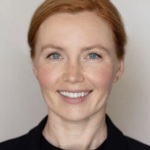
Co-chair of Michelson Philanthropies a Los Angeles-based private operating foundation striving to create transformative opportunities that support vulnerable and underserved communities. Founded FirstGen, a storytelling platform that creates communal spaces for immigrant women to gather in celebration of their diverse experiences.
Eva Hsieh

For as long as Eva can remember, she has always had a strong appreciation in the beauty she sees around her. From flowers to insect, antique furniture to architecture, almost everything she encounters, she finds the beauty in it and turns it into inspirations. Unsurprisingly, she became a fashion designer, as well as a floral arrangement enthusiast. Eva started her own intimate women’s apparel brand, Eve’s Temptation, in China in 2001, rapidly expanded into Chinese shopping malls, growing the company into hundreds of stores nationally. As the founder and head designer, her goal is to create apparels that help women of all ages to feel more confident, attractive, inclusive, and at their best from the inside out. With the great passion for art, and the willingness to help the new generation, Eva Hsieh is a patron of the Huntington Library, MOCA, and the Getty Museum. She has been supportive of young emerging contemporary artists around the world, integrating the cultural exchange between the east and the west. As a devoted philanthropist, she expanded her philanthropic contributions to the field of cancer and neuroscience research. She has been working with the USC Norris Comprehensive Cancer Center, Children’s Hospital Los Angeles, and the UCLA research initiatives as well as being a trustee of Brain Mapping Foundation supporting major global initiatives for neuroscience including G20 Summit’s Neuroscience20 (Spine, Brain20 and Mantal20) and Brain technology and Innovation Park; World’s First Biotech Park for Brain, Spine and Mental Health.
Anthony Fauci
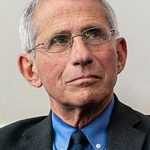
From Wikipedia Anthony Stephen Fauci (/ˈfaʊtʃi/ FOW-chee; born December 24, 1940) is an American physician-scientist and immunologist who served as the director of the National Institute of Allergy and Infectious Diseases (NIAID) from 1984 to 2022, and the chief medical advisor to the president from 2021 to 2022.[4] As a physician with the National Institutes of Health (NIH), Fauci has served the American public health sector for more than fifty years and has acted as an advisor to every U.S. president since Ronald Reagan.[5] During his time as director of the NIAID, he made contributions to HIV/AIDS research and other immunodeficiency diseases, both as a research scientist and as the head of the NIAID.[6] From 1983 to 2002, Fauci was one of the world’s most frequently cited scientists across all scientific journals.[6][7] In 2008, President George W. Bush awarded him the Presidential Medal of Freedom, the highest civilian award in the United States, for his work on the AIDS relief program PEPFAR.[8] During the COVID-19 pandemic, he served under President Donald Trump as one of the lead members of the White House Coronavirus Task Force. Fauci’s advice was frequently contradicted by Trump, and Trump’s supporters alleged that Fauci was trying to politically undermine Trump’s run for reelection. After Joe Biden took office, Fauci began serving as one of the lead members of the White House COVID-19 Response Team and as Biden’s chief medical advisor.[9][10] Fauci stepped down on December 31, 2022.[11] Early life and education Anthony Fauci was born on December 24, 1940, in Brooklyn, New York City, to Eugenia Lillian (née Abys; 1909–1965) and Stephen A. Fauci (1910–2008) and is the youngest of two children born to both parents. His father was a Columbia University-educated pharmacist who owned his pharmacy. Fauci’s mother and sister worked the pharmacy’s register, and Fauci delivered prescriptions and also worked the register. Fauci’s mother also worked at a dry cleaner. The pharmacy was located in the Dyker Heights section of Brooklyn, directly beneath the family apartment, previously in the Bensonhurst neighborhood.[12][13][14] When he was a child, Fauci developed a fascination with World War II,[13] and played basketball and baseball during his spare time.[14] Fauci’s grandparents immigrated to the United States from Italy in the late 19th century. His paternal grandparents, Antonino Fauci and Calogera Guardino, were from Sciacca, and his maternal grandparents were from Naples. His maternal grandmother Raffaella Trematerra was a seamstress, and his maternal grandfather Giovanni Abys was a Swiss-born artist noted for his landscape and portrait painting, magazine illustrations in Italy, as well as graphic design for commercial labels, including olive oil cans. Fauci grew up Catholic,[12][15] but now considers himself a humanist, stating that he thinks “that there are a lot of things about organized religion that are unfortunate, and [that he tends] to like to stay away from it.”[16] In 2021, he was named Humanist of the Year by the American Humanist Association.[17] Fauci attended Regis High School, a Jesuit school on Manhattan’s Upper East Side, where he captained the school’s basketball team despite standing only 5 ft 7 in (1.70 m) tall.[6][18][19] Jesuit’s philosophy of “to be men for others” would have a lasting impact on Fauci.[14] He decided halfway through high school to become a physician.[13] After graduating in 1958, Fauci attended the College of the Holy Cross, graduating in 1962 with a Bachelor of Arts degree in classics with a pre-med track. Fauci then attended Cornell University‘s Medical College (now Weill Cornell Medicine), graduating with a Doctor of Medicine degree in 1966 ranked first in his class.[12] At Cornell, he focused on adult internal medicine, mainly infectious diseases and the immune system.[13] Fauci then did an internship and residency in internal medicine at New York Hospital-Cornell Medical Center (now Weill Cornell Medical Center).[6] Career Fauci discusses his work in 2020 (four minutes) After completing his medical residency in 1968, Fauci joined the National Institutes of Health (NIH) as a clinical associate in the National Institute of Allergy and Infectious Diseases‘s (NIAID) Laboratory of Clinical Investigation (LCI).[20] He became head of the LCI’s Clinical Physiology Section in 1974, and in 1980 was appointed chief of the NIAID’s Laboratory of Immunoregulation. He became director of the NIAID in 1984.[21] Fauci has been offered the position of director of the NIH several times, but has declined each time.[22] Fauci has been at the forefront of U.S. efforts to contend with viral diseases like HIV/AIDS, SARS, the Swine flu, MERS, Ebola, and COVID-19. He played a significant role in the early 2000s in creating the President’s Emergency Plan for AIDS Relief (PEPFAR)[23] and in driving development of biodefense drugs and vaccines following the 9/11 terrorist attacks.[24] Fauci has been a visiting professor at many medical centers and has received numerous honorary doctorates from universities in the U.S. and abroad.[25] Medical achievements President Bill Clinton visits the NIH in 1995 and hears about the latest advances in HIV/AIDS research from Fauci. Fauci has made important scientific observations that contributed to the understanding of the regulation of the human immune response and is recognized for delineating the mechanisms whereby immunosuppressive agents adapt to that response. He developed therapies for formerly fatal diseases such as polyarteritis nodosa, granulomatosis with polyangiitis, and lymphomatoid granulomatosis. In a 1985 Stanford University Arthritis Center Survey, members of the American Rheumatism Association ranked Fauci’s work on the treatment of polyarteritis nodosa and granulomatosis with polyangiitis as one of the most important advances in patient management in rheumatology over the previous 20 years.[25][26][27] Fauci discovered how to re-dose cancer drugs in a way that turned a 98 percent mortality rate of the disorder vasculitis into a 93 percent remission rate.[13] President Barack Obama greets Fauci in June 2014. Fauci has contributed to the understanding of how HIV destroys the body’s natural defense system, progressing to AIDS. He has outlined the mechanisms of induction of HIV expression by endogenous cytokines.[27] Fauci has worked to develop strategies for the therapy and immune reconstitution of patients with the disease, as well as for a vaccine to prevent HIV infection. His current research is concentrated on identifying the nature of the immunopathogenic mechanisms of HIV infection and the scope of the body’s immune responses to HIV. In 2003, the Institute for Scientific Information stated that from 1983 to 2002, “Fauci was the 13th most-cited scientist among the 2.5 to 3.0 million authors in all disciplines throughout the world who published articles in scientific journals.”[6] As a government scientist under seven presidents, Fauci has been described as “a consistent spokesperson for science, a person who more than any other figure has brokered a generational peace” between the two worlds of science and politics.[18] HIV/AIDS epidemic Fauci in 1984 In a 2020 interview with The Guardian, Fauci remarked, “My career and my identity has really been defined
Gary Michelson, MD
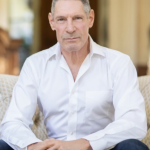
Co-chair of Michelson Philanthropies and a world-renowned orthopedic surgeon and innovator specializing in spinal surgery. Involved in philanthropic work, spanning across medical research, education, and animal welfare. Inducted into the National Inventors Hall of Fame and National Academy of Inventors.
Cameron Piron, MS
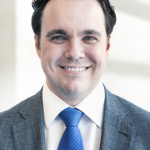
Industry-recognized leader and innovator in image-guided surgery. Awarded University of Waterloo’s Alumni Achievement medal for leading Sentinelle Medical in researching and manufacturing leading-edge MRI technologies that allow physicians to diagnose breast cancer and other medical conditions accurately and faster.
Sanjay Gupta
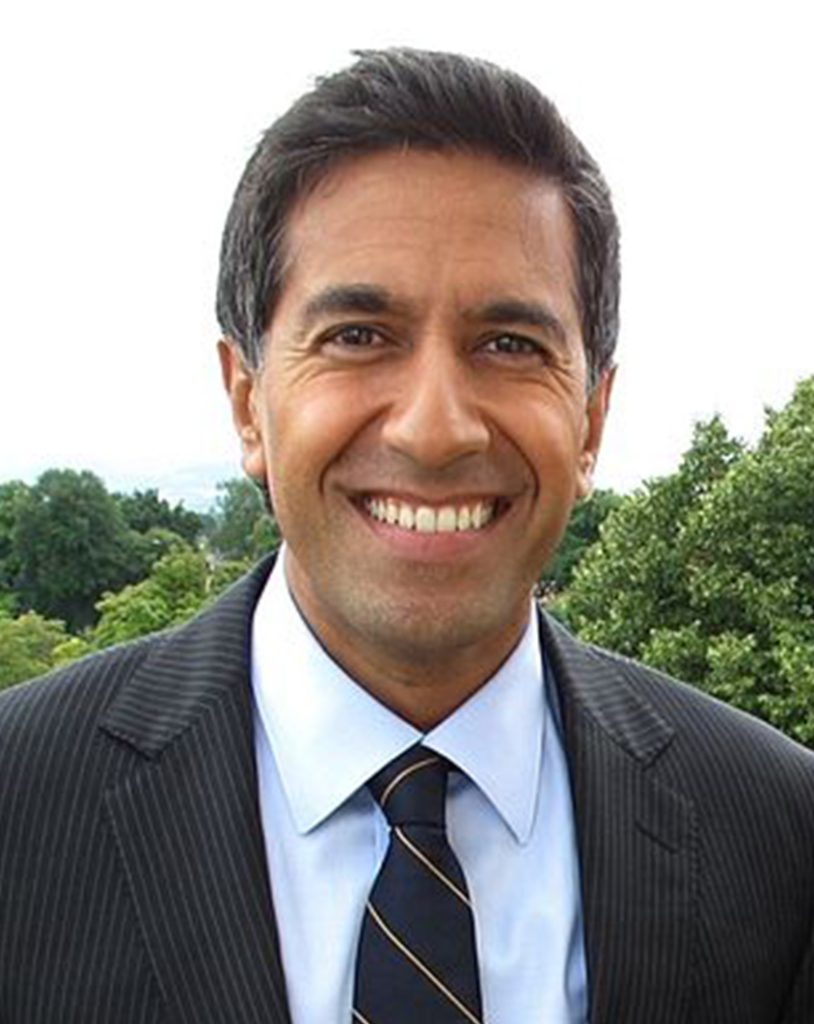
From Wikipedia Sanjay Gupta (born October 23, 1969) is an American neurosurgeon, medical reporter, and writer. He serves as associate chief of the neurosurgery service at Grady Memorial Hospital in Atlanta, Georgia, associate professor of neurosurgery at the Emory University School of Medicine, member of the National Academy of Medicine[1] and American Academy of Arts and Sciences[2] and is the chief medical correspondent for CNN. Gupta is known for his many TV appearances on health-related issues. During the 2020 coronavirus pandemic, he has been a frequent contributor to numerous CNN shows covering the crisis, as well as hosting a weekly town hall with Anderson Cooper.[3] Gupta was the host of the CNN show Sanjay Gupta MD for which he has won multiple Emmy Awards. Gupta also hosted the 6-part miniseries Chasing Life. He is a frequent contributor to other CNN programs such as American Morning, Larry King Live, CNN Tonight, and Anderson Cooper 360°. His reports from Charity Hospital, New Orleans, Louisiana, in the wake of Hurricane Katrina led to his winning a 2006 Emmy Award for Outstanding Feature Story in a Regularly Scheduled Newscast. He is also a special correspondent for CBS News. Sanjay Gupta also co-hosts the health conference Life Itself, along with Marc Hodosh (co-creator of TEDMED).[4] Gupta published a column in Time magazine and has written four books: Chasing Life, Cheating Death, Monday Mornings: A Novel, and Keep Sharp (Jan 2021).[5][6][7] Early life and education[edit] Gupta was born in Novi, Michigan, a suburb of Detroit. In the 1960s, Gupta’s parents, Subhash and Damyanti Gupta, moved from India prior to their marriage and met in Livonia, Michigan, where they worked as engineers for Ford Motor Company.[8][9] His mother was born in the village of Tharushah in Sindh (now Pakistan), but at age 5 fled to India as a Hindu refugee during the Partition of India.[10] Gupta and his younger brother Suneel graduated from Novi High School and Gupta went on to receive his Bachelor of Science degree in biomedical sciences at the University of Michigan in Ann Arbor, and his M.D. degree from the University of Michigan Medical School in 1993. He was part of Interflex, a since discontinued accelerated medical education program that accepted medical students directly from high school. As an undergraduate, Gupta worked as an orientation leader for the freshman orientation program and was a member of the Men’s Glee Club. He also served as president of the Indian American Students Association (IASA), which is now the second-largest student organization at the university.[11] Gupta completed his residency in neurological surgery within the University of Michigan Health System, in 2000, followed by a fellowship at the Semmes Murphy Clinic, in Memphis, Tennessee.[12] Gupta plays the accordion, having taken ten years of lessons, as he noted in an interview with David Hochman for Playboy.[13] Career[edit] Medical practice[edit] Gupta (third from left) with Henri Ford (second from left) and two U.S. Navy doctors operating on a 12-year-old girl aboard the USS Carl Vinson.[14] Gupta is an Emory Healthcare general neurosurgeon at Grady Memorial Hospital and has worked on spine, trauma and 3‑D‑image-guided operations. He has published medical journal articles on percutaneous pedicle screw placement,[15][16] brain tumors, and spinal cord abnormalities.[17][18] He is licensed to practice medicine in Georgia.[19] From 1997 to 1998, he served as one of fifteen White House Fellows, primarily as an advisor to Hillary Clinton. In January 2009, it was reported that Gupta was offered the position of Surgeon General of the United States in the Obama Administration,[20] but he withdrew his name from consideration.[21] During his reporting in Haiti following the January 2010 earthquake, Gupta received a call from the aircraft carrier USS Carl Vinson that an earthquake victim, a 12-year-old girl, was aboard and needed a neurosurgeon. Gupta, a pediatric surgeon, Henri Ford, and two U.S. Navy doctors removed a piece of concrete from the girl’s skull in an operation performed aboard the Vinson.[22][23] Ford later wrote that Gupta “proved to be a competent neurosurgeon”.[24] Broadcast journalism, television, film and events[edit] Gupta joined CNN in the summer of 2001. He reported from New York following the attacks on the U.S. on September 11, 2001.[5] In 2003, Gupta traveled to Iraq to cover the medical aspects of the invasion of Iraq. While in Iraq, Gupta performed emergency surgery on both US soldiers and Iraqi civilians.[25] Gupta was embedded with a Navy medical unit at the time, specifically a group of Corpsman called the “Devil Docs”, who supported the 1st Marine Expeditionary Force.[26] Marine Sergeant Jesus Vindaña suffered a rear gunshot wound, and the Marines asked for Gupta’s assistance because of his background in neurosurgery. Vindaña survived and was sent back to the United States for rehabilitation.[25] In December 2006, CBS News president Sean McManus negotiated a deal with CNN that would have Gupta file up to ten reports a year for the CBS Evening News with Katie Couric and 60 Minutes while remaining CNN’s chief medical correspondent and associate chief of neurosurgery at Grady Memorial Hospital. On October 14, 2007, Gupta guest-hosted a health episode of CBS News Sunday Morning as its regular host Charles Osgood was on vacation. In February 2009, Gupta hosted AC360 covering the White House Health Summit. He also guest hosted Larry King Live in October 2009. In January 2010, Gupta and Cooper led CNN’s coverage of the earthquake in Haiti. Gupta has regularly appeared on the Late Show with David Letterman,[27] The Late Late Show with Craig Ferguson,[28] The Daily Show with Jon Stewart,[29] Real Time with Bill Maher and the Oprah Winfrey Show.[30] Winfrey referred to Gupta as CNN’s hero in January 2010.[31] In 2011, Gupta portrayed himself in the movie Contagion, which has received much renewed attention during the 2020 coronavirus pandemic.[32] His novel Monday Mornings became an instant New York Times bestseller on its release in March 2012. It was adapted as a 2013 television series with David E. Kelley and Gupta serving as executive producers. In a 2013 editorial, Gupta announced that in the process of working on a documentary about marijuana he had changed his mind about the drug’s risks and benefits. Gupta had previously criticized laws that allowed patient access to medical marijuana, but he reversed his stance, saying, “I am here to apologize,” and, “We have been terribly and systematically misled for nearly 70 years in the United States, and I apologize for my own role in that.”[33] The third part of his 3-hour documentary, “Weed 3: The Marijuana Revolution”, was released in April 2015.[34] He was a co-producer of the 2017 CNN documentary Unseen Enemy, which warned of the risks of a global pandemic.[35] Gupta served as a commentator on the University of Michigan TeamCast with former Wolverines kicker Jay Feely for the school’s appearance in the 2018 NCAA Men’s Final Four, which aired on CNN sibling TNT.[36] In April 2019, Chasing Life was adapted as a six-show TV miniseries on CNN that took him to Japan, India, Bolivia, Norway, Italy, and Turkey.[37] In September 2019, Gupta
General Mark Milley
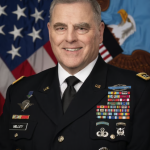
GENERAL MARK A. MILLEY Chairman of the Joint Chiefs of Staff General Mark A. Milley is the 20th Chairman of the Joint Chiefs of Staff, the nation’s highest-ranking military officer, and the principal military advisor to the President, Secretary of Defense, and National Security Council. Prior to becoming Chairman on October 1, 2019, General Milley served as the 39th Chief of Staff of the U.S. Army. A native of Massachusetts, General Milley graduated from Princeton University in 1980, where he received his commission from Army ROTC. General Milley has had multiple command and staff positions in eight divisions and Special Forces throughout the last 42 years to include command of the 1st Battalion, 506th Infantry, 2nd Infantry Division; the 2nd Brigade, 10th Mountain Division; Deputy Commanding General, 101st Airborne Division (Air Assault); Commanding General, 10th Mountain Division; Commanding General, III Corps; and Commanding General, U.S. Army Forces Command. While serving as the Commanding General, III Corps, General Milley deployed as the Commanding General, International Security Assistance Force Joint Command and Deputy Commanding General, U.S. Forces Afghanistan. General Milley’s joint assignments also include the Joint Staff operations directorate and as a Military Assistant to the Secretary of Defense. General Milley’s operational deployments include the Multi-National Force and Observers, Sinai, Egypt; Operation Just Cause, Panama; Operation Uphold Democracy, Haiti; Operation Joint Endeavor, Bosnia-Herzegovina; Operation Iraqi Freedom, Iraq; and three tours during Operation Enduring Freedom, Afghanistan. He also deployed to Somalia and Colombia. In addition to his bachelor’s degree in political science from Princeton University, General Milley has a master’s degree in international relations from Columbia University and one from the U.S. Naval War College in national security and strategic studies. He is also a graduate of the MIT Seminar XXI National Security Studies Program. General Milley and his wife, Hollyanne, have been married for more than 36 years and have two children.
